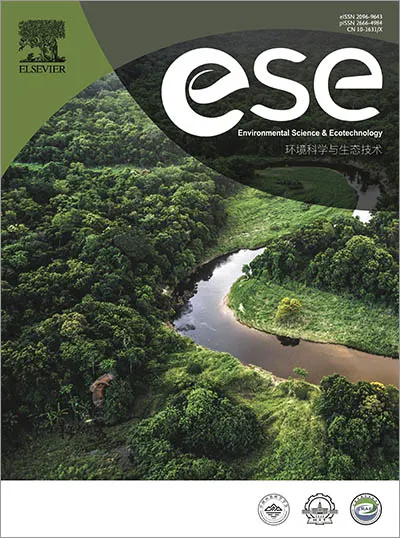8 steps to creating a successful open access journal
25 de abril de 2023
Por Maggie Yang

This Chinese society-owned OA journal received an Impact Factor just 2 years after launch. Here’s how it made the grade.
Gaining recognition from key indexing services soon after launch is a milestone that can signify the success of a journal, with the Impact Factor often considered to be the Holy Grail. Rightly or wrongly, Impact Factor equals academic credibility, leading to more and higher quality articles, leading to more citations, leading to more usage.
And so a virtuous cycle is set in motion.
Despite recent changes in government research policies, gaining an Impact Factor continues to be particularly important in China, likely due to the historical ways in which Chinese researchers have been evaluated for funding and career promotion.
Environmental Science and Ecotechnology (ESE) se abre en una nueva pestaña/ventana, a gold open access journal launched in January 2020 in partnership with the Chinese Society for Environmental Sciences, Harbin Institute of Technology, and the Chinese Research Academy of Environmental Sciences, is a fantastic example of a journal that gained an Impact Factor early in its life and is reaping the benefits. The journal was indexed by DOAJ se abre en una nueva pestaña/ventana in February 2021, by Scopus in April 2021, and then by Clarivate se abre en una nueva pestaña/ventana in December 2021, receiving its first Impact Factor in June 2022. Its first Impact Factor was a hugely impressive 9.371, ranked it 31st among 279 journals in the Environmental Sciences category of Clarivate’s Journal Citation Reports. In addition, ESE was indexed by PubMed in September 2022, and its instant CiteScore is 12.5, ranking it 21st among 133 journals in Scopus’s Environmental Science category.
So how did ESE gain such status, and so quickly? The following factors have contributed to its rapid success, and we believe these steps can help other societies as well:

Establish a strategic partnership with a trusted publisher. In this case, three preeminent societies with unique networks and subject expertise partnered with Elsevier, a leading publisher with the resources and know-how needed for success in a highly competitive field.
Plan and invite seed papers in advance. Half a year ahead of the journal launch, the Editor-in-Chief and editorial team invited about 30 high-profile authors to submit articles, including a couple of review articles (known to be particularly good at attracting citations). In doing so, the journal launched with a bang.
Commission good papers and organize virtual special issues on hot topics. The editorial team organized a number of high-impact special issues on hot topics, including carbon neutrality, electrochemistry for the environment, artificial intelligence, and data driven-methods in environmental research. (All articles were subject to the journal’s rigorous peer review standards and full oversight by the journal’s Editor-in-Chief.)
Submit applications to key indexing repositories in time. At Elsevier, we have an expert team dedicated to understanding and applying for coverage of the various indexing services on behalf of each new Elsevier-published journal. Moreover, Elsevier-published open access journals obtain their first Impact Factor faster and with a higher value compared to other publishers (source: Scopus and Clarivate).
Ensure speed at every step. Expectations regarding speed of publication (including peer review) are higher in China than elsewhere in the world, and slow speed is often a key reason for not submitting to a journal. Authors in ESE have benefitted from an average 1.7 weeks to receive first decision and 3.7 weeks for the whole review.
Promote content through multiple social channels. Recognizing the unique way in which Chinese authors engage with academic journals, the editorial team established ESE WeChat and Twitter channels to promote key articles. Marketing activities are data-driven and targeted utilizing Elsevier’s Scopus indexing and abstracting database.
Keep the editorial team refreshed. Although a new journal, ESE has already added an Early Career Editorial Board in 2021. Not only do early career board members typically submit good papers, they also tend to act as good reviewers.
Motivate authors, reviewers and editors. Best paper, top reviewers, and editor awards have been introduced to recognize and motivate authors, reviewers and editors, who are the lifeblood of any journal.
In July 2022, when Environmental Science & Ecotechnology received its first Impact Factor, Editor-in-Chief Dr Nanqi Ren, Professor at the Harbin Institute of Technology, China, and academician at the Chinese Academy of Engineering, thanked the Elsevier team in an email, crediting them with helping the journal obtain such a strong first Impact Factor at such a fast speed:
The Impact Factor published yesterday is testimony to the extraordinary contribution of the Elsevier team. Every single member has contributed to this success. We shall have further moments for celebration. But for now, just two words — thank you.
Despite Environmental Science and Ecotechnology being a mere 3 years old, it has already made huge progress.
To learn more about how we can help you to successfully launch your academic journal, please contact your publisher or [email protected] se abre en una nueva pestaña/ventana.

Prof Nanqi Ren, PhD
Contribuidor

MY
Maggie Yang
Senior Publisher, Environmental Science and Agronomy
Elsevier
Contacto

MY
Maggie Yang
Senior Publisher, Environmental Science and Agronomy
Elsevier